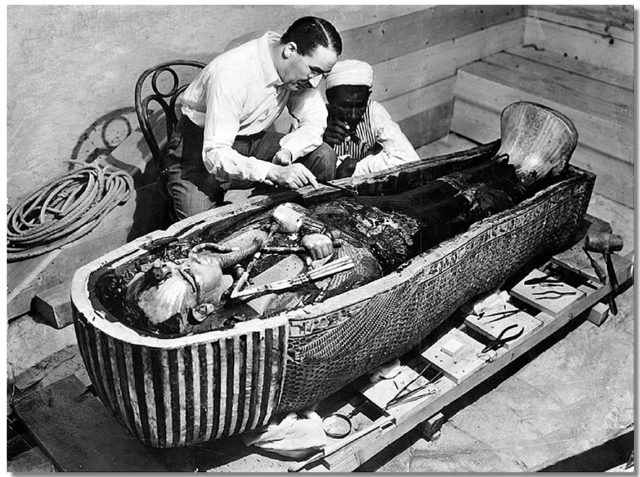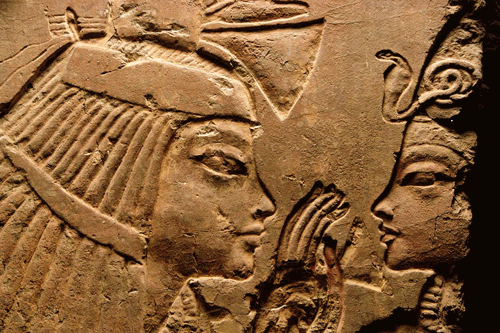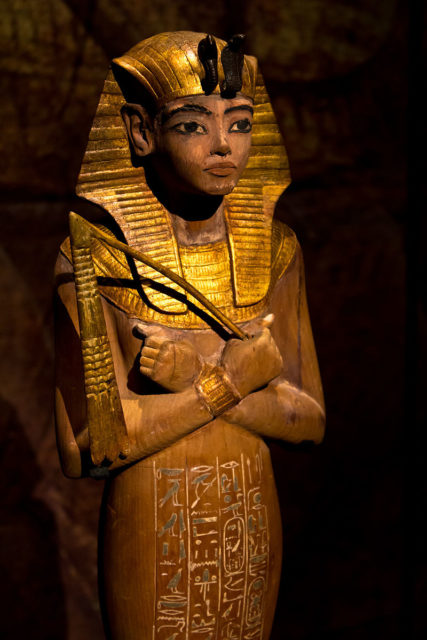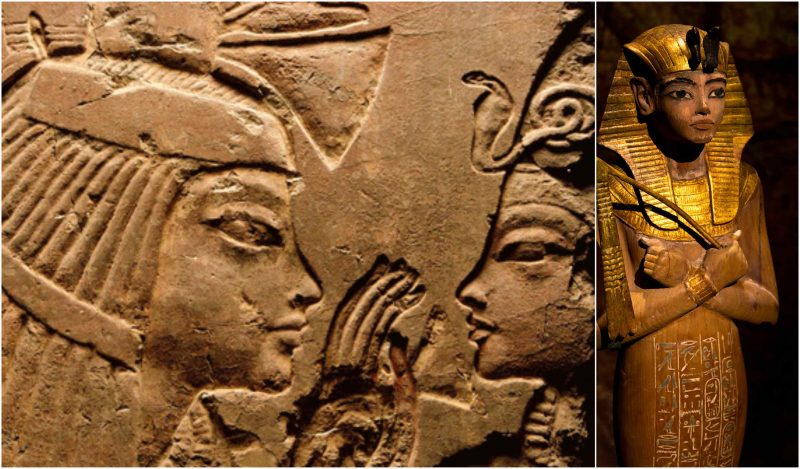On Sunday, an archaeologist said that Maia, who served as the wet nurse of Egyptian pharaoh Tutankhamun, may have been the pharaoh’s sister, Meritaten. This claim has revived the speculation about the identity of the mother of the boy king. The identity of Tutankhamun’s father has long been known—thanks to DNA testing that occurred in 2010. His father was the pharaoh Akhenaten. His mother, however, is still unknown.
King Tutankhamun was one of the youngest pharaohs to reign. He was a mere ten years old when he took the throne. After he ruled for nine years, he died at the age of nineteen in the year 1324 BC, more than 3,000 years ago. Regardless of the time that has passed between his death and modern day, researchers are still keenly interested in this boy king.
Recently, Maia’s tomb was unveiled by Egyptian officials and Alain Zivie, a French archaeologist, to journalists. This was a whole month ahead of the public unveiling. The tomb itself is located in Saqqara, a necropolis that is about twelve miles south of Cairo. It was Alain Zivie who discovered the tomb back in 1996.

The mummy of Tutankhamun was discovered in 1922 by the renowned British Egyptologist Howard Carter in the Valley of Kings in Luxor. Along with Tut’s mummy, a veritable treasure trove that included thousands of objects was also found. Many of these artifacts have found their homes in museums across the world.
According to Zivie, who is the director of the French Archaeological Mission of Bubasteion. “Maia is none other than princess Meritaten, the sister or half-sister of Tutankhamun and the daughter of Akhenaten and Nefertiti.”

The evidence for this, he said, is in the carvings in Maia’s tomb of Tutankhamun and Maia. “The extraordinary thing is that they are very similar. They have the same chin, the eyes, the family traits,” he continued. “The carvings show Maia sitting on the royal throne and he is sitting on her” lap, he added.
There are similar carvings that were found in Akhenaten’s tomb at the Tel el-Amarna archaeological site in modern-day Minya province. During Akhenaten’s time, the site served as his capital city. Akhenaten is well-known for converting ancient Egypt to monotheism when he imposed the cult of the sun god Aton. This conversion, however, was temporary. After his death, Egypt returned to polytheism.

In the tomb of Akhenaten, there are carvings that depict the death of a princess named Maketaten, who was the second daughter of Akhenaten and Nefertiti. Zivie explained, “In these scenes, there is a woman who is breastfeeding a baby, and this woman shown as a wet nurse is princess Meritaten, the eldest daughter of Akhenaten,” he said. As of today, the mummy of Meritaten has not been recovered.
But, according to Mamduh al-Damati, Antiquities Minister of Egypt, her mummy may reside in a secret chamber in King Tutankhamun’s tomb. Damati is not the only one to suggest there is a hidden room in that particular tomb. A British archaeologist by the name of Nicholas Reeves has also claimed that the tomb has more to offer. Although, Reeves believes that the chamber might not hold Meritaten, but actually Queen Nefertiti, whose mummy has also not been found.
Spurred by these theories, archaeologists are currently scanning Tut’s tomb in the Valley of the Kings. Whatever they find, it will benefit the understanding of Egyptology, the history of the pharaohs, and King Tut himself—a sentiment that is shared by the Minister of Antiquities.
“All these possibilities exist. Step by step we will be able to better understand the time of king Tutankhamun,” Damati.
